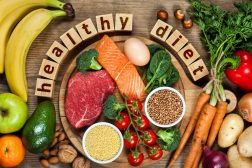Electrophoresis
(Science: technique) separation of ionic molecules, (principally proteins) by the differential migration through a gel according to the size and ionic charge of the molecules in an electrical field. High resolution techniques normally use a gel support for the fluid phase.
Examples of gels used are starch, acrylamide, agarose or mixtures of acrylamide and agarose. Frictional resistance produced by the support causes size, rather than charge alone, to become the major determinant of separation.
Smaller molecules with a more negative charge will travel faster and further through the gel toward the anode of an electrophoretic cell when high voltage is applied. Similar molecules will group on the gel. They may be visualised by staining and quantitated, in relative terms, using densitometers which continuously monitor the photometric density of the resulting stain.
The electrolyte may be continuous (a single buffer) or discontinuous, where a sample is stacked by means of a buffer discontinuity, before it enters the running gel/ running buffer. The gel may be a single concentration or gradient in which pore size decreases with migration distance.
in sds gel electrophoresis of proteins or electrophoresis of polynucleotides, mobility depends primarily on size and is used to determined molecular weight. In pulse field electrophoresis, two fields are applied alternately at right angles to each other to minimise diffusion mediated spread of large linear polymers.
See: electrofocussing, pulse field electrophoresis
Dictionary > Electrophoresis
You will also like...

Non-Mendelian Inheritance
In this tutorial, find out more about certain types of inheritance that does not follow the Mendelian inheritance patter..

Human Reproduction
Humans are capable of only one mode of reproduction, i.e. sexual reproduction. Haploid sex cells (gametes) are produced ..

Genetics and Evolution
Humans are diploid creatures. This means that for every chromosome in the body, there is another one to match it. Howeve..

The Water Cycle
The water cycle (also referred to as the hydrological cycle) is a system of continuous transfer of water from the air, s..

Digestion and Absorption of Food
The gastrointestinal system breaks down particles of ingested food into molecular forms by enzymes through digestion and..

A Balanced Diet – Minerals and Proteins
Proteins and minerals can be derived from various dietary sources. They are essential for the proper growth and developm..

